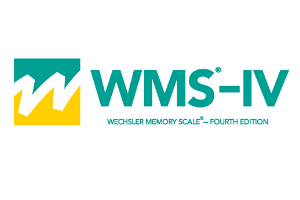

Wechsler Memory Scale ® Fourth Edition (WMS ® -IV) is the most widely used scale of adult memory. In response to changing demographics, increased caseload, and new research and clinical needs, this latest edition of the memory test includes four new subtests and modifications to three existing subtests. Eight subtests have also been eliminated.
Wechsler Memory Scale ® Fourth Edition (WMS ® -IV) is the most widely used scale of adult memory. In response to changing demographics, increased caseload, and new research and clinical needs, this latest edition of the memory test includes four new subtests and modifications to three existing subtests. Eight subtests have also been eliminated.
Overview:The most widely used scale of adult memory has been revised and enhanced to provide you with the most advanced measure and results you can trust.
Age Range:
16:0 to 90.11 years
RTI Tiers:
Scores/Interpretation:
Publication Date:
In recognition of emerging demographic and clinical trends, the WMS—IV was developed to provide you with the most advanced measure of memory and results you can trust when addressing the changing clinical landscape.
The WMS-IV has had significant changes to the overall test structure. Based on feedback from customers, we are introducing four new subtests and modifying three existing subtests.
Based on “N-Back Paradigm”, Spatial Addition requires minimal motor function as the client must:
A “Visual analog to Digit Span”, clients are asked to remember the design and the left to right sequence of the design. The clients are then asked to select the correct design from foils and choose them in the correct sequence.
No more motor requirements
Containing four items of increasing difficulty, Design Memory evaluates immediate and delayed recall as well as delayed recognition. It does not include drawing and reduces the opportunity to guess the correct response. You can obtain scores for spatial, details, and correct content in the correct location as well as contrast scores for spatial versus detail, immediate versus delayed, and recognition versus delayed.
Obtain scores for spatial, details, and correct content in the correct location.
This new screener can be used to quickly evaluate significant cognitive impairment. You can assess:
Also available are classification tables that translate total scores into Average, Low, Moderately low, and Very low.
For use with the WMS-IV kit, new materials and data are now available that enable more flexible assessment based on individual client needs and examiner preferences.
The WMS-IV offers a number of subtest configurations that yield Immediate, Delayed, Visual and Auditory Memory Index scores. The combinations of subtests reflect the desire to reduce administration time and to address specific clinical situations (e.g., limited motor ability).

The Standard WMS-IV: This consists of the 7 primary subtests that comprise the full WMS-IV battery and provide coverage for all the memory indexes.
The OAA* Battery: The OAA battery was developed in the standard WMS-IV as a shorter battery for use with older adults ages 65 to 90. This battery configuration was made available for examinees ages 16 through 69 in the WMS-IV Flex. The OAA battery uses LM, VR, and Verbal Paired Associates (VPA) to derive Immediate, Delayed, Auditory, and Visual Indexes.
The LMVR and LMDE* Batteries:
Two shorter alternative batteries were developed: LMVR, consisting of Logical Memory (LM) and Visual Reproduction (VR), and LMDE, consisting of Logical Memory and Designs (DE). LM and VR are the most frequently used subtests in the previous editions of the WMS and provide coverage for all the memory indexes. The second configuration of LM and DE retains the
content coverage with reduced motor demands.
The VRLO and LONA Batteries:
The last set of alternate batteries focuses on using supplemental subtests for assessing visual memory, which is a difficult construct to measure. During the development of the WMS-IV, two additional memory subtests were created: Logos (LO) and Names (NA). These two subtests provide optional measures of visual memory with the understanding that auditory memory functioning will also affect performance on these tests.
*LMDE and OAA batteries can be collected using standard WMS-IV record forms and an accompanying worksheet provided in the WMS-IV Flexible Manual.
View a sample copy of the Scoring Report to accompany WMS-IV
Two pricing options are now available for scoring and reporting on Q-global. In addition to the current per-report price, there is now an unlimited-use scoring and reporting subscription available in one-, three-, and five-year terms.
Important note: Each subscription is per user for the WMS-IV only and will begin on the date of order processing unless otherwise requested.